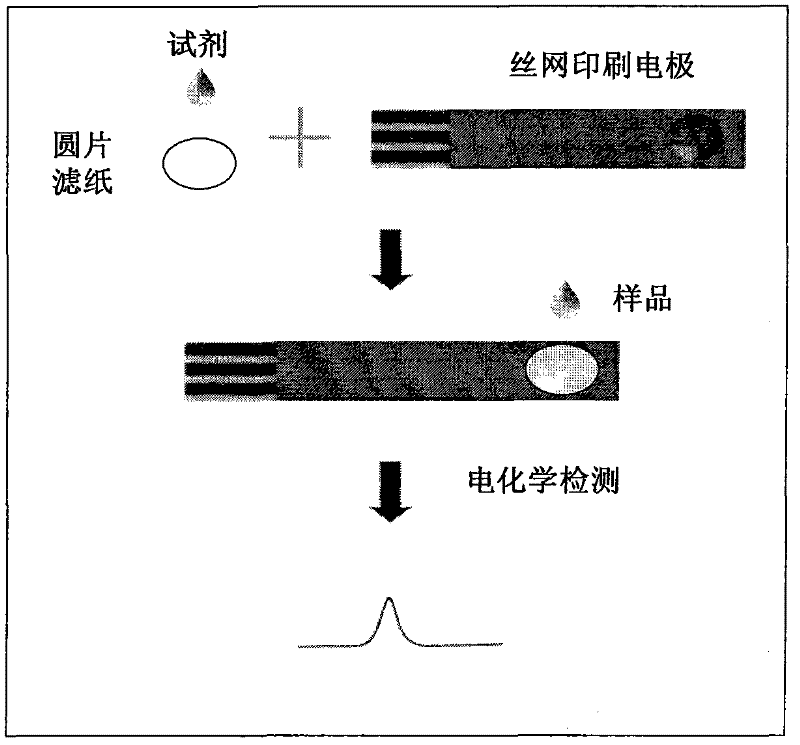Application of filter paper adsorbent to direct electrochemical detection of lead in water sample
A filter paper, electrochemical technology, applied in the direction of material electrochemical variables, etc.
- Summary
- Abstract
- Description
- Claims
- Application Information
AI Technical Summary
Problems solved by technology
Method used
Image
Examples
Embodiment 1
[0015] Embodiment 1. Utilize the filter paper piece adsorption reagent to be used in the method for the direct detection of lead in the water sample electrochemically, measure the lead content in the water sample.
[0016] Take Waterman No.1 filter paper, use a puncher to take out a disc with a diameter of about 7 mm, then add 10 microliters of acetic acid buffer solution (pH 4.5) to the filter paper dropwise, dry at room temperature, and then add 10 microliters of 500ppb bismuth nitrate solution and dried at room temperature. Before the measurement, the filter paper sheet was covered on the surface of the screen printing electrode (Gwent group, Torfaen, United Kingdom), and 10 microliters of water samples with a known lead content of 20ppb were added dropwise on the filter paper, according to the electrochemical anodic stripping method. Voltammetric measurement, frequency 20Hz; potential amplitude 5mV; electrochemical deposition at -1.40V for 120s, equilibration time 30s. An...
Embodiment 2
[0019] Get known lead content and be that 10 microliters of water samples of 10ppb are dripped on the filter paper, measure according to electrochemical anodic stripping voltammetry, other are all the same as embodiment 1, the lead measurement result in the water sample is 9.4ppb, measure The error is 6%.
Embodiment 3
[0021] It is known that 10 microliters of water samples with a lead content of 100 ppb are added dropwise on the filter paper, and are measured according to electrochemical anodic stripping voltammetry. Others are the same as in Example 1. The lead measurement result in the water samples is 97.6 ppb, and the measurement error was 2.4%.
PUM
| Property | Measurement | Unit |
|---|---|---|
| diameter | aaaaa | aaaaa |
Abstract
Description
Claims
Application Information
 Login to View More
Login to View More - R&D Engineer
- R&D Manager
- IP Professional
- Industry Leading Data Capabilities
- Powerful AI technology
- Patent DNA Extraction
Browse by: Latest US Patents, China's latest patents, Technical Efficacy Thesaurus, Application Domain, Technology Topic, Popular Technical Reports.
© 2024 PatSnap. All rights reserved.Legal|Privacy policy|Modern Slavery Act Transparency Statement|Sitemap|About US| Contact US: help@patsnap.com








